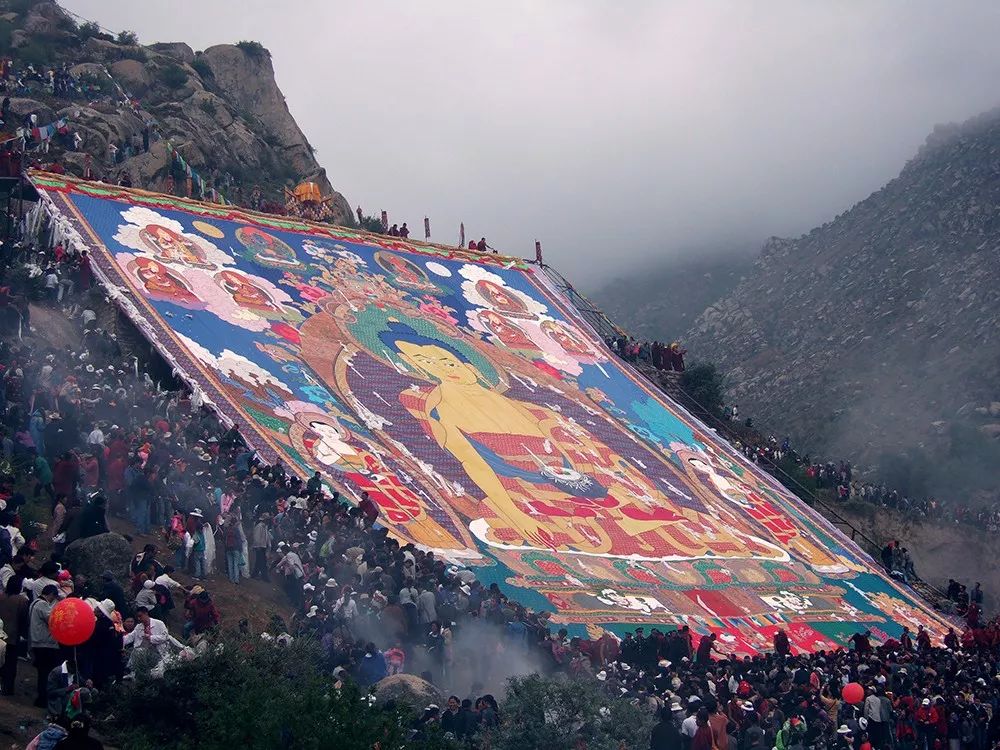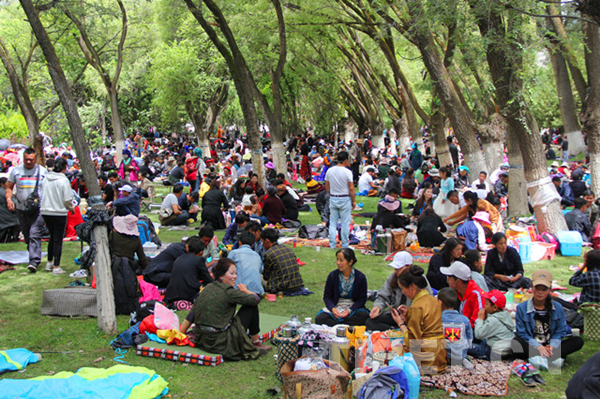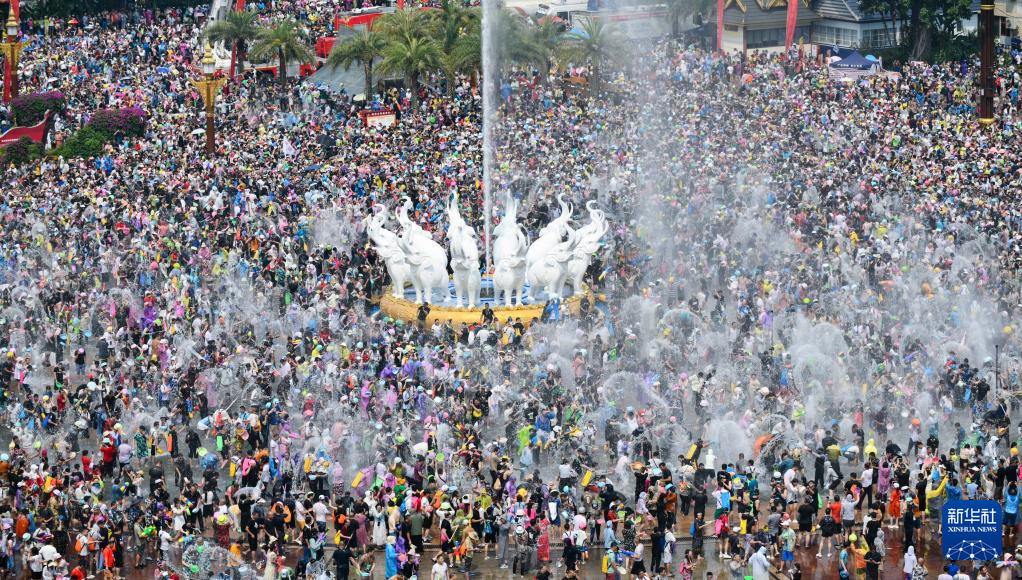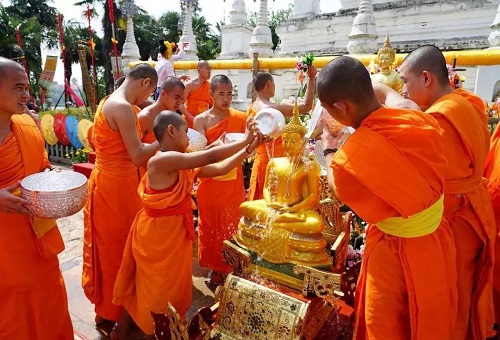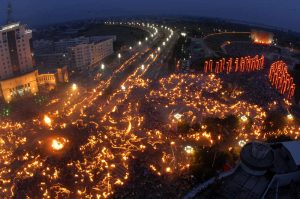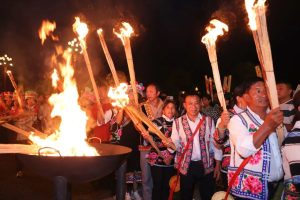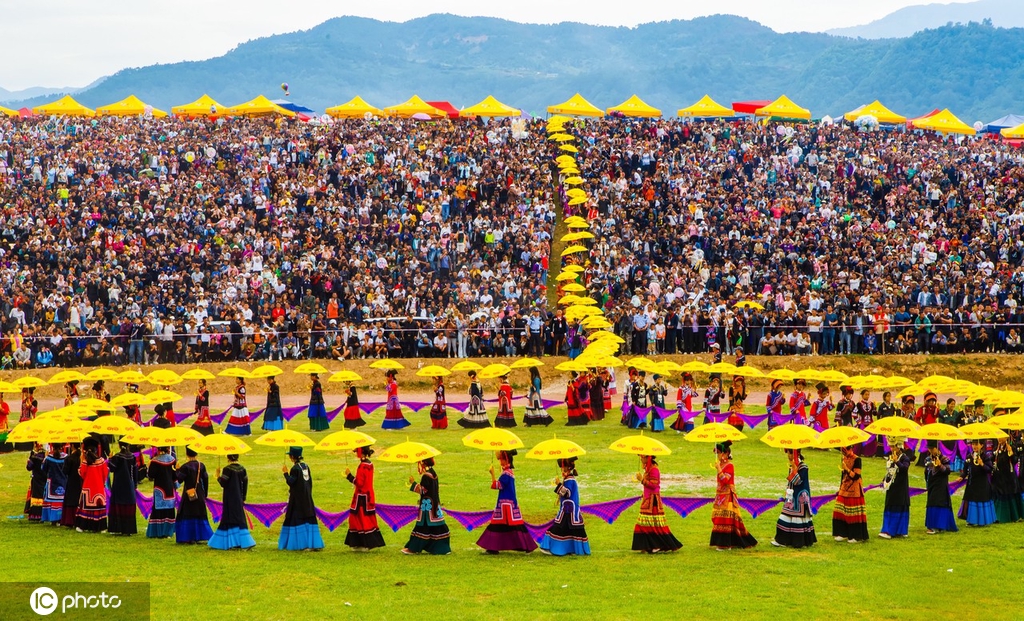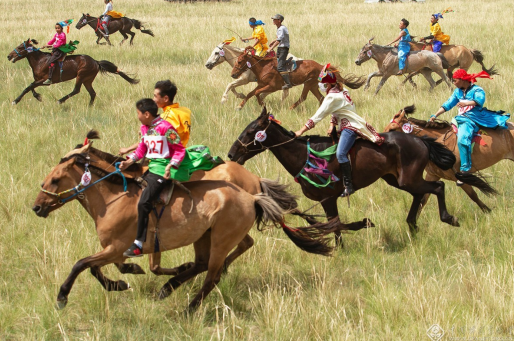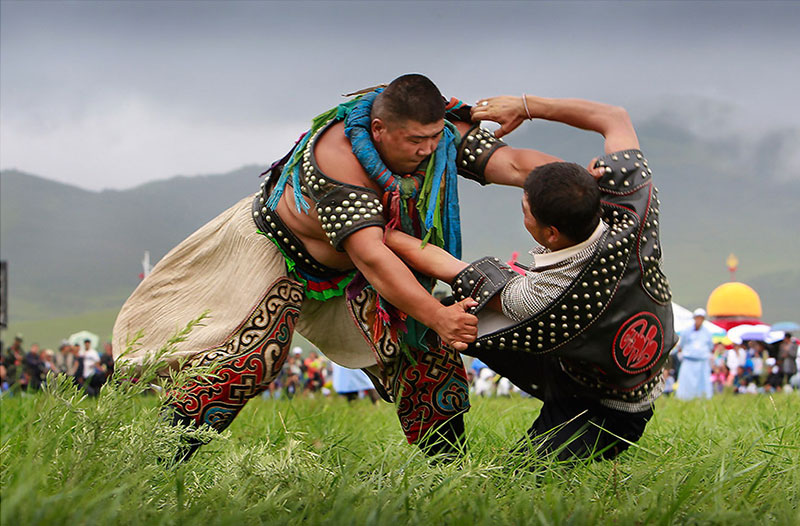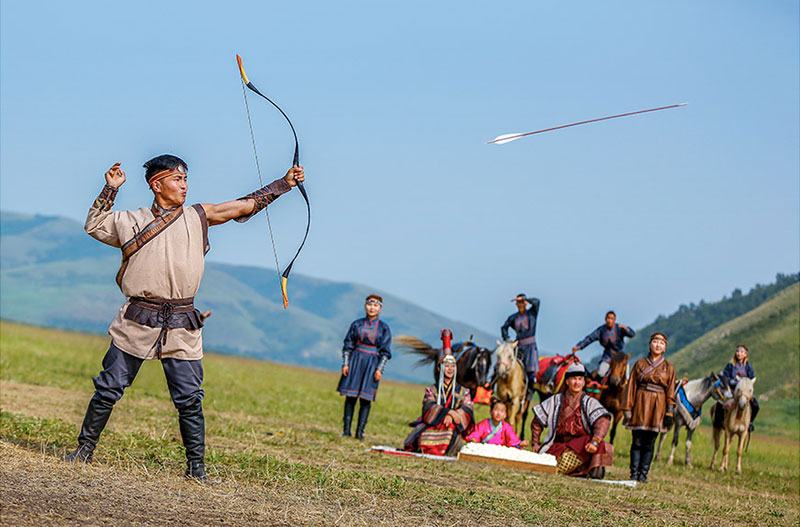2. Traditional Festival of Chinese Ethnic Minorities
Besides Han ethnic group, Chinese has 55 minorities and each group has it traditional holidays. Here we introduce 7 unique holidays celebrated by the minorities people in China.
2.1 Tibetan Shoton Festival
The Shoton Festival (雪顿节) is one of Tibet’s oldest traditional festivals, originally known as the “Yogurt Banquet.” It begins on the 1st day of the 7th month in the Tibetan calendar and lasts about a week (5-7 days). Dur to its grand Tibetan opera performances and large-scale Buddha exhibitions, it is also referred as the “Tibetan Opera Festival” (藏戏节) or “Buddha Exhibition Festival” (展佛节).
Traditionally, the festival originated in the mid-11th century as a purely religious event. Monks were forbidden to go outside to avoid violating the precept of “not taking life”by stepping on living creatures during the flourishing summer. To reward the monks on the day the ban is lifted at the end of the sixth month, laypeople would prepare yogurt and hold outdoor banquets for them. Tibetan opera performances would also take place during the celebrations, marking the origin of the Shoton Festival.
The festival traditionally begins with the unveiling of a Buddha image, primarily held at Drepung Monastery (哲蚌寺) and Sera Monastery (色拉寺), with Drepung Monastery’s Buddha exhibition being particularly notable. On the 30th day of the 6th month in the Tibetan calendar, at dawn, hundreds of young monks, accompanied by a religious band, cascades a 100-feet-high and 65-meter-wide silk brocade thangka (唐卡, a traditional Tibetan Buddhist painting or embroidery on cloth, usually depicting a Buddhist deity, scene, or mandala) down the steep cliff behind the monastery, allowing tens of thousands of monks and laypeople to venerate and pay homage.
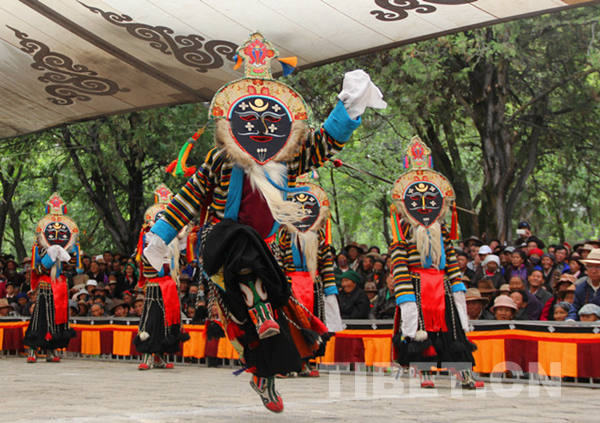
Tibetan Opera
During the Shoton Festival, Tibetan opera troupes perform continuously from 11 AM until dusk each day. Tibetan opera, with a history of over 600 years, possesses unique charm. It features melodious singing, expressive soliloquies, actors in solemn and ancient costumes adorned with colorful masks, and graceful dance movements. On 2009, Tibetan opera was approved for inclusion in the Representative List of the Intangible Cultural Heritage of Humanity of United Nations.
Besides, Tibetan people gather at Norbulingka (罗布林卡, the summer palace of Dalai Lama) during the festival. Dressed in vibrant costumes, families and friends set up colorful tents, lay out mats and carpets on the ground, and arrange various wines, beverages, and festive foods. They drink, chat, sing, dance, watch Tibetan opera, and enjoy the festive joy.
2.2 Water-Splashing Festival
The Water-Splashing Festival (泼水节) of the Dai ethnic group in China (who predominantly reside in the Xishuangbanna Dai Autonomous Prefecture and the Dehong Dai and Jingpo Autonomous Prefecture in Yunnan Province) is their most significant and grand traditional festival. It typically takes place around the 6th or 7th month of the Dai calendar (approximately ten days after Qingming Festival) and lasts for three days. During this festival, people splash water on each other as a gesture of blessing and engage in other cultural activities. In 2006, this festival was listed in the national intangible cultural heritages in China. The Water-Splashing Festival originally traces its roots back to the 5th century in Persia and was later introduced to the Dai regions of China via India along with Buddhism.
The festival spans three days: the first day, known as “Mairen,” similar to New Year’s Eve, involves cleaning homes, preparing special meals, and visiting temples to pray for blessings. The second day, “Naochen,” symbolizes a day outside of the old and new year, and typically involves the water-splashing activities to commemorate the heavenly maiden who purified the community. This is a day of mutual wishes for peace and happiness. The third day, “Maipaya Wama,” marks the return of the new year according to the Dai calendar, known as the “arrival of the King of Days,” which is considered the Dai New Year.
Additionally, during the water-Splashing Festival, Chinese Dai people participate in dragon boat races, release water lanterns at night, attend Buddhist temples to listen to monks chanting scriptures for blessings, hold cockfights, perform peacock dances, play bean-bag games, set off firecrackers, fly lanterns, and and enjoy various cultural performances.
Apart from China’s Dai ethnic group, other Dai-speaking ethnic groups and countries in South and Southeast Asia, such as Thailand, Myanmar, Laos, and Sri Lanka, also celebrate this festival together. In Thailand, the Water-Splashing Festival is known as Songkran and was inscribed on UNESCO’s Representative List of the Intangible Cultural Heritage of Humanity in 2023.
2.3 Yi Torch Festival
The Torch Festival (Yi Torch Festival 彝族火把节), popular in Yi ethnic areas such as Yunnan, Guizhou, and Sichuan provinces in the Southwest of China, is a traditional festival typically observed on the 24th or 25th day of the 6th lunar month. This festival is a grand ceremony held by the Yi people to pray for good harvests, dispel disasters, and celebrate the harvest and New Year. In 2006, the Yi Torch Festival was listed as national intangible cultural heritage in China.
2023 Yi Torch Festival in Chuxiong, Yunan (top) and the Torch Festival in Liangshang, Sichuan(bottom)
The Yi Torch Festival usually lasts for three days and nights, divided into three stages: fire sacrifice, fire play, and fire procession.
On the first day (Fire Sacrifice), each Yi village hosts a collective feast and offers wine and meat to their ancestors. At night, people build altars and strike stones to create sparks and light sacred fires, the Yi ethnic priests chant scriptures and deliver blessings. People hold the torches from the priests to drive away insects from their fields and homes.
On the second day (Fire Play), families gather under the sacred fire of the altar to participate in various traditional festival activities. Young men compete in horse racing, wrestling, tug-of-war, archery, bullfighting, etc. Young women, dressed in beautiful attire and holding yellow umbrellas, perform traditional singing and dances. Elderly people in the village will select a brave and heroic young man and a kind and intelligent young woman. The Torch Festival is also an opportune time for young men and women to ignite love and convey their affections.
The third day (Fire Procession) is the climax of the entire Yi Torch Festival. At night, people gather their torches symbolizing light and hope into a massive bonfire and perform the traditional torch dances together around the bonfires.
The Torch Festival is an integral part of Yi culture, serving as a cultural carrier and transmission medium for traditional music, dance, poetry, cuisine, and clothing of the Yi ethnic group.
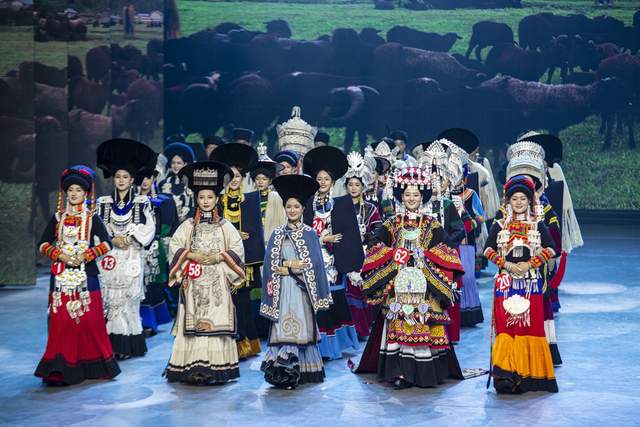
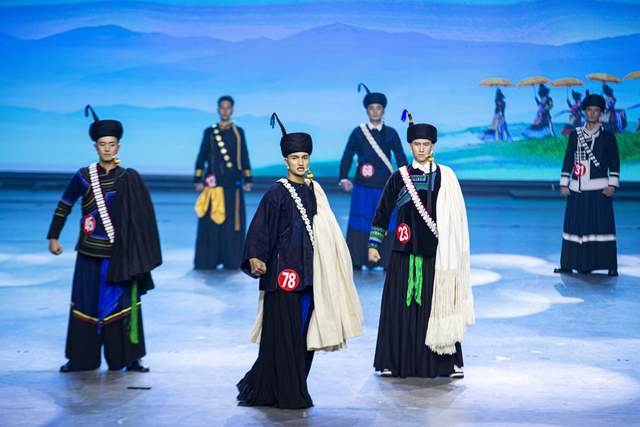
2023 Yi Beauty Pageant, Liangshan, Sichuan
2.4 Naadam Festival
The Naadam Festival is a traditional grand festival of the Mongolian ethnic group in China, held annually from July 11 to 13. The term “Naadam” means “entertainment and games” in Mongolian. Historical records indicate that the festival dates back to 1225 during Genghis Khan’s reign. In 2006, it was listed as a national intangible cultural heritage of China.
Mongolians follow special rituals and practices during the festival, such as wearing unique costumes and using distinctive tools and sporting items. Festival participants revere the sportsmen, sportswomen, and children who compete, and winners are rewarded titles for their achievements. Ritual praise songs and poems are dedicated to the contestants in the events. The Naadam Festival focuses on three traditional games: horse racing, wrestling and archery. They are directly linked with the lifestyles and living conditions of the Mongols. Everyone is allowed and encouraged to participate in Naadam, thus nurturing community involvement and togetherness.
The thrilling horse racing event is a traditional highlight of the festival. The competitions include Flat Racing: Focuses on speed over straight-line distances of 20, 30, or 40 kilometers. Trotting Races: Judges the steadiness and lightness of the horse’s steps. Bucking Races: A unique Mongolian equestrian performance. Competitions can involve dozens to hundreds of riders.
Wrestling is a beloved sport among the Mongolian people and a key event at the festival. It features unique attire, rules, and techniques. Wrestlers, irrespective of region or weight, compete in an elimination format where a single fall determines the winner. The number of participants must be a power of 2. Techniques include grappling, pulling, pushing, and pressing, but leg holds, face hits, pulling from behind, touching the eyes or ears, hair pulling, and kicking above the knee are prohibited.
Archery is one of the three traditional events in the festival. The competition includes short-range, mounted, and long-range shooting, with distances of 25, 50, and 100 paces. Participants of all ages, regardless of gender, bring their own horses and bows. There are no restrictions on bow type, draw weight, arrow length, or weight. The competition consists of three rounds with nine arrows, where each archer shoots three arrows per round. Winners are determined by the number of arrows hitting the target.

